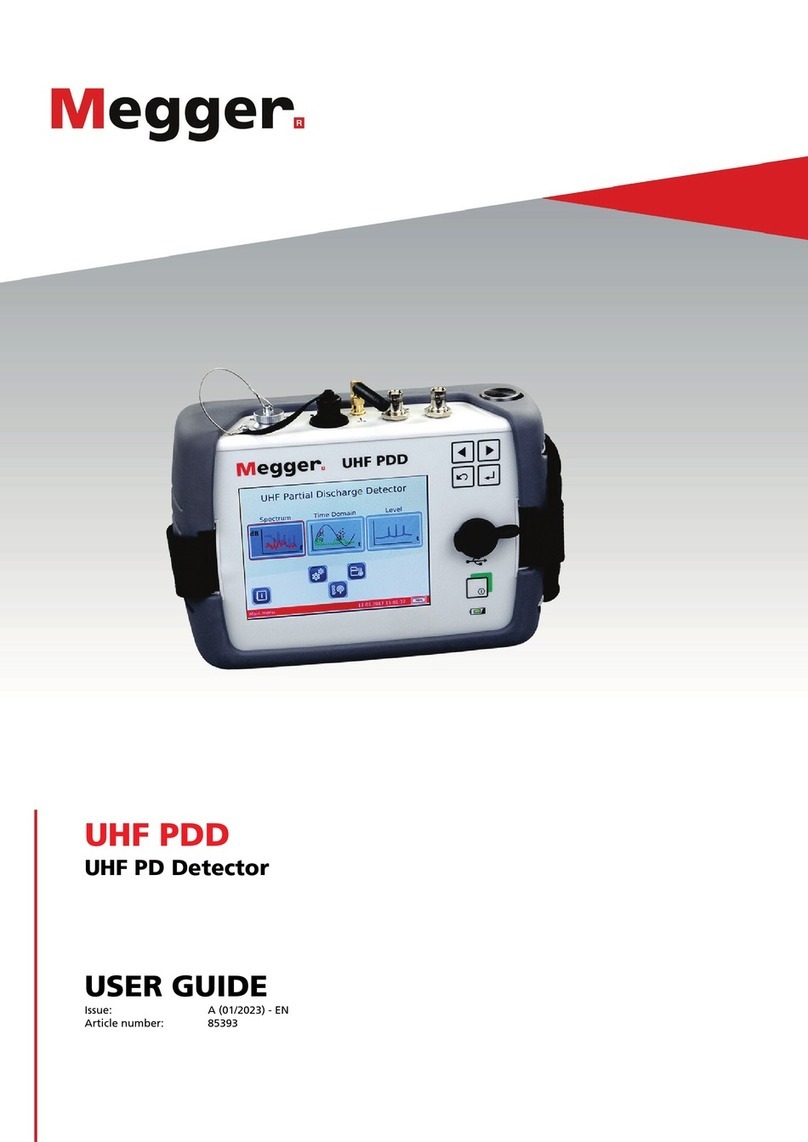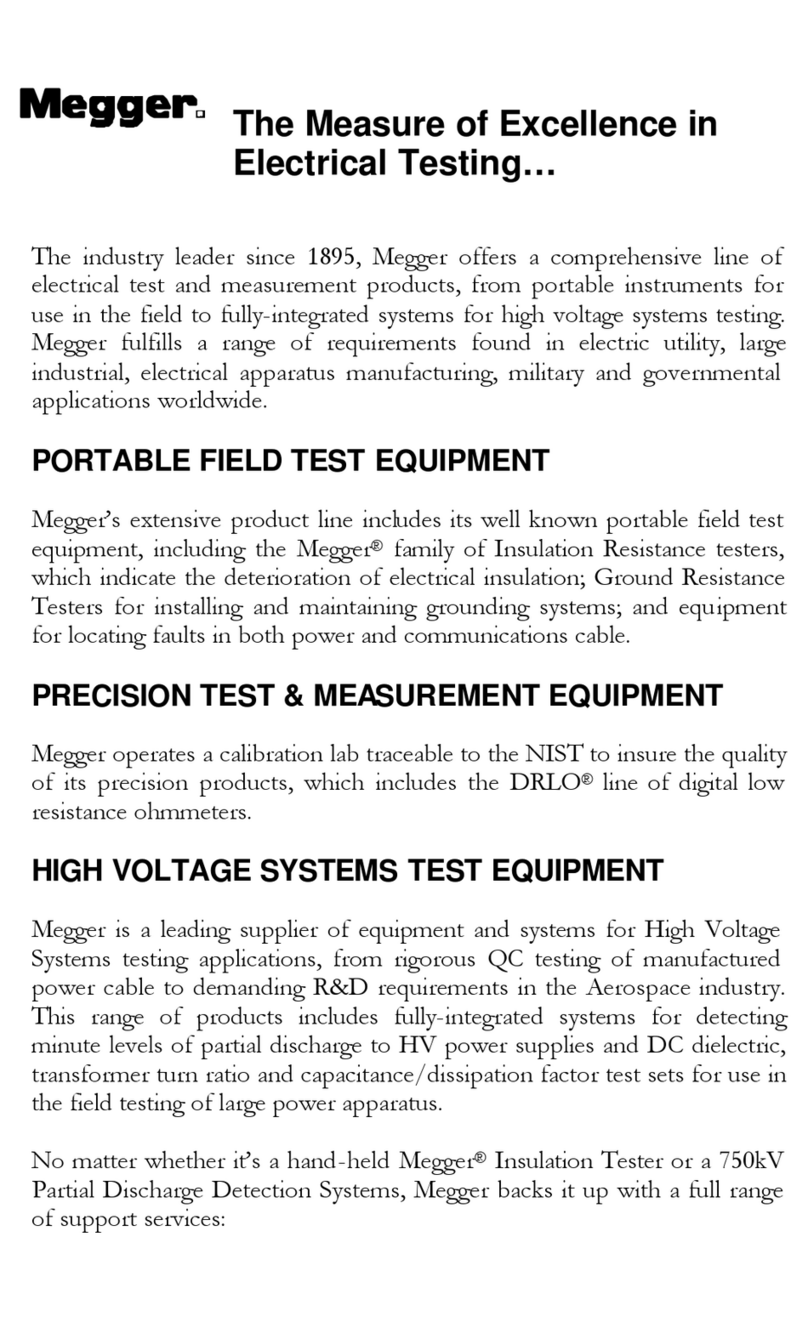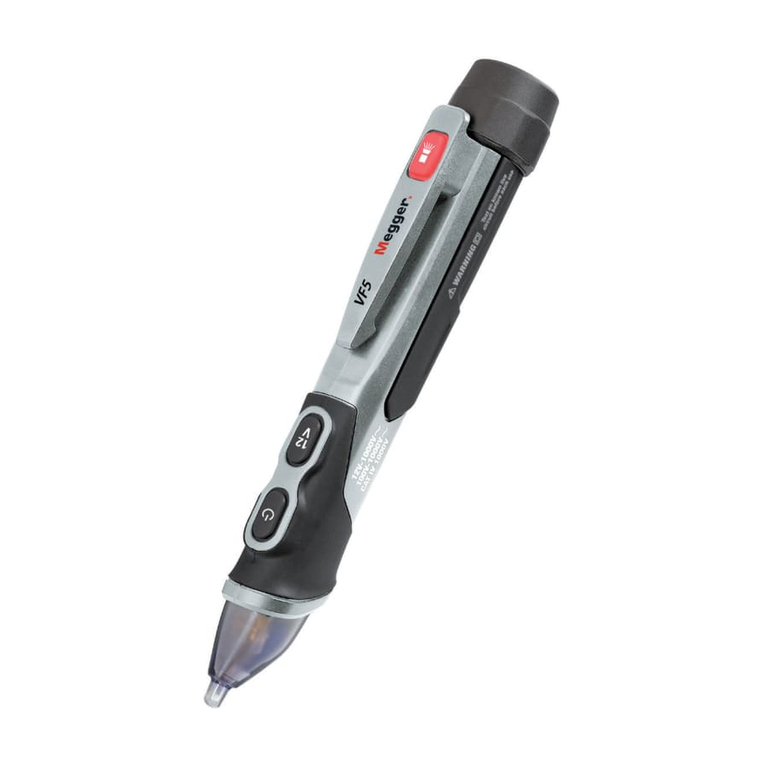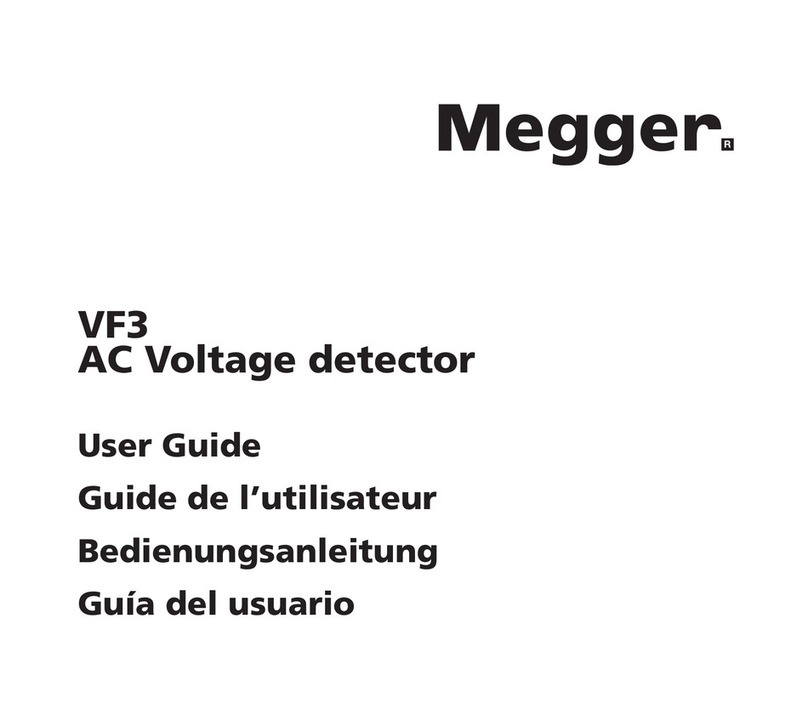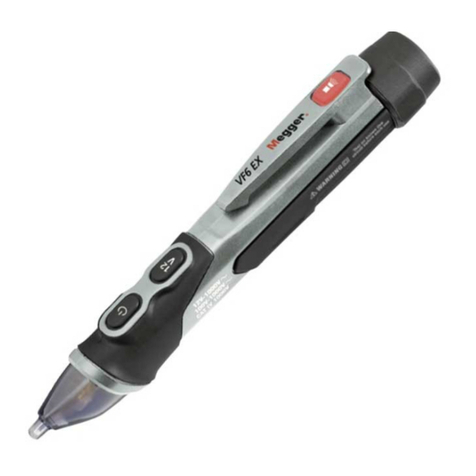
4
2.0 INTEGRATED SFX SERIES FAULT LOCATING SYSTEM
The SFX Series models locate efficiently high and low resistance as well as intermittent
cable faults on primary and, under certain circumstances, secondary power cables. Due to a
sequential safety interlock system it is not possible to inadvertently apply high voltage to the
cable under test.
The SFX Series models combine three modes of operation, with a maximum voltage of
either 15 or 25 kV in each mode (complete specifications for each model are listed in the
appendix):
- Arc Reflection Mode, ARM in combination with internally integrated filter
- Direct Thump Mode
- DC Highpot Mode (optional leakage current measurement)
The SFX Series Models use an electronically controlled feed back circuit to control the
voltage at the high voltage discharge contact, which is solenoid operated. This design
ensures optimum energy transfer from the impulse capacitor into the faulty cable. The surge
generator (SG 15/25) is under normal use maintenance free for many years.
The SFX Series Models automatically discharge the cable under test and their own internal
capacitor(s)
- when the power to the unit is turned off
- when "High Voltage" in any of the operating modes is switched off
- when the HV switch is pulled in order to change the mode of operation
The SFX Series Models contain a built-in ARM filter, which is essential in the application of
the Arc Reflection Method for fault locating. The filter isolates and protects the TDR from the
high voltage pulse produced by the surge generator and couples the low voltage, high
frequency TDR pulse onto the energized cable.
The TDR detects “opens” (cable end or fault) and “shorts”, cable splices and transformers
as well as any change in impedance in the cable under test. High resistance phase to
ground faults, also referred to as “pinhole faults” (typically higher than 200 ohms) do not
produce a detectable reflection on a TDR. By using the thumper in combination with the
TDR it is possible to detect this type of fault. The flashover, which is generated by the
thumper, converts the high resistance fault temporarily into a low resistance fault (several
Ohms), which can be detected by the TDR. The distance between the cable hook-up (start
marker) and the fault location (end marker) is displayed on the TDR screen.






